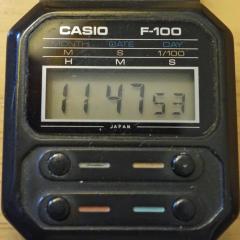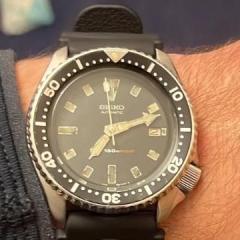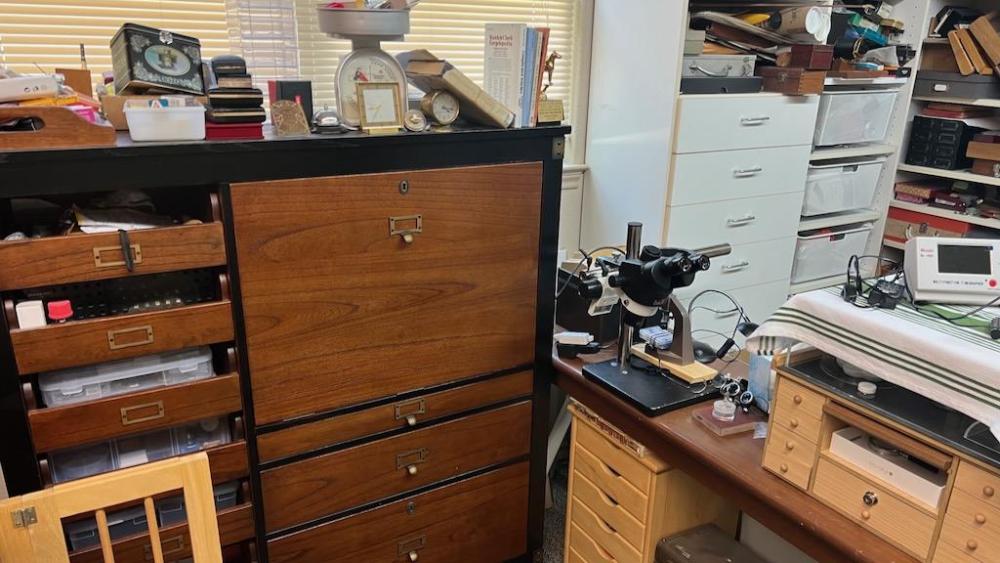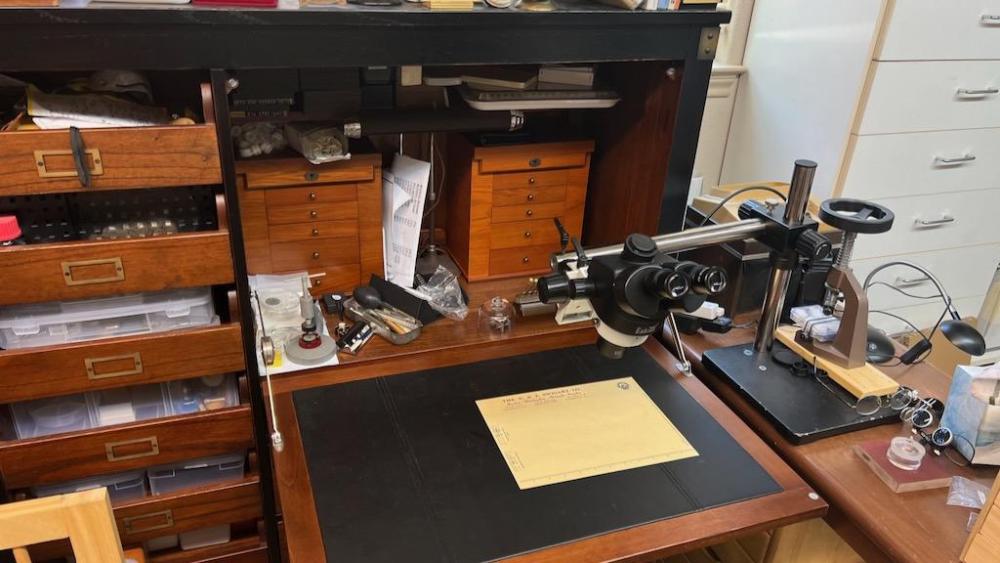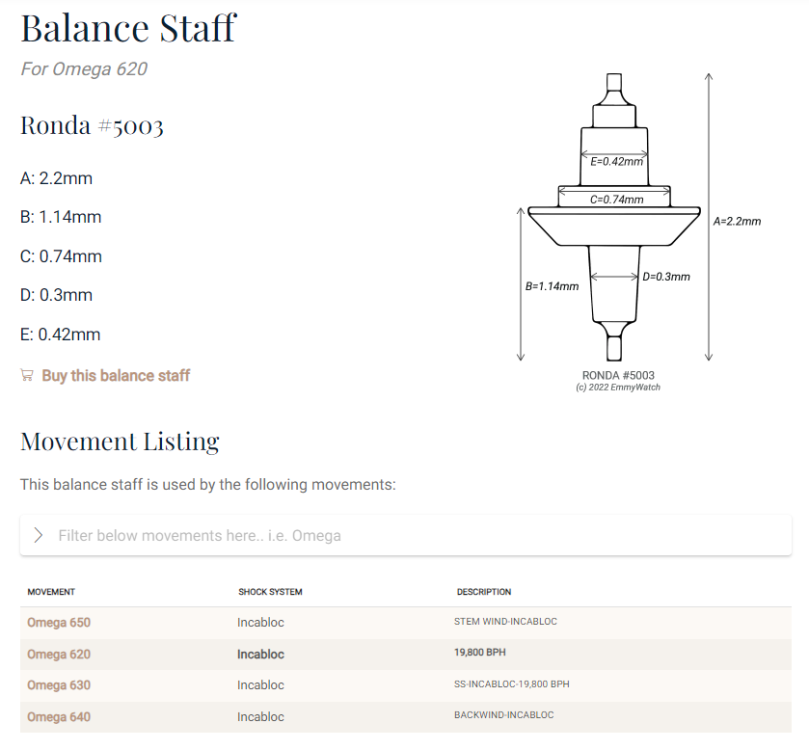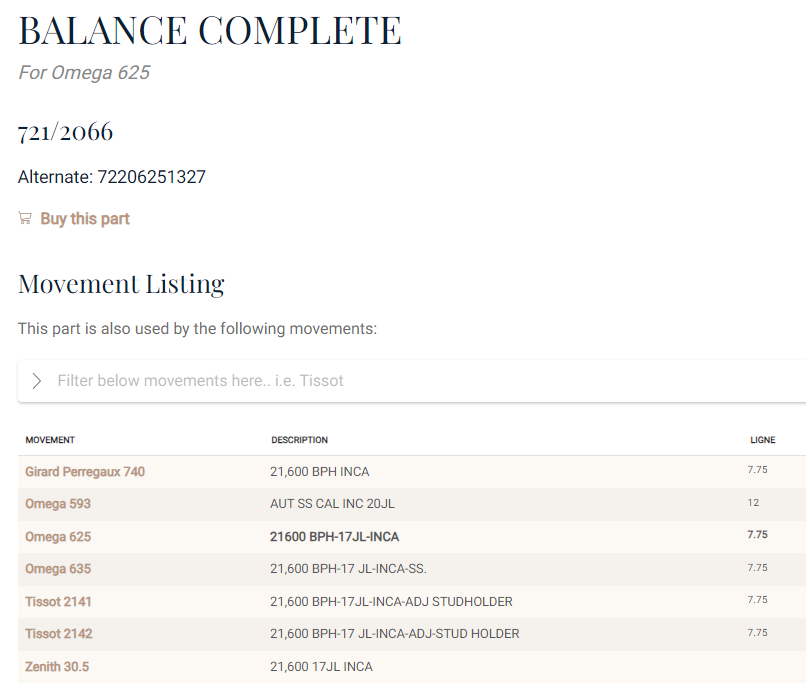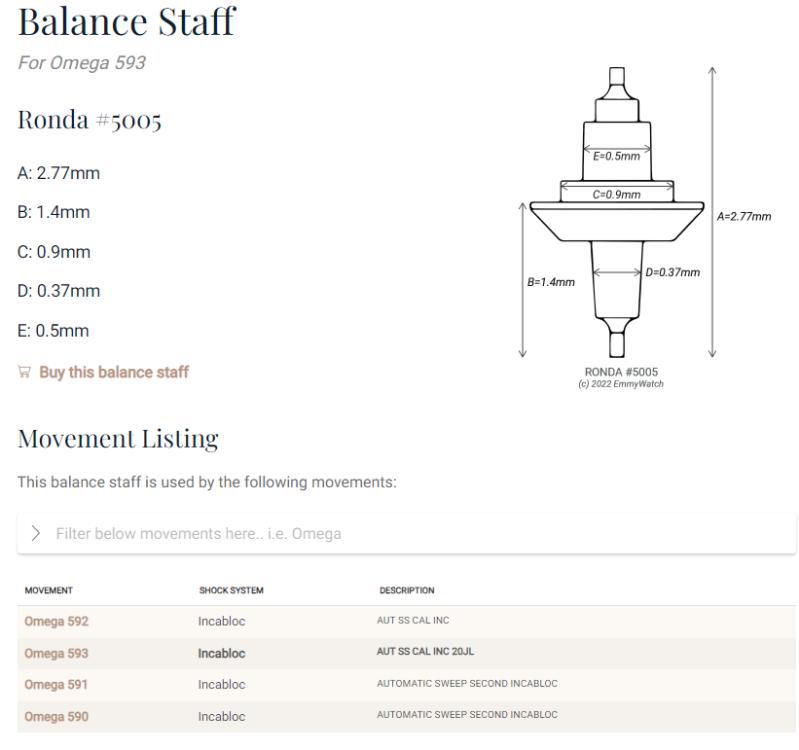Leaderboard
Popular Content
Showing content with the highest reputation on 07/12/24 in all areas
-
If I can revive an old thread, I found this incredibly helpful. Some suggestions were more useful to me than others. I lost one spring and broke another before I successfully got the replacement in place. The biggest thing I would say to any novice at this is to remember how easily the thing accidentally slipped out. It goes in with equally little force. Be gentle and patient. Things I found helpful: I used a pair of tweezers in one hand and a large oiler in the other. I mostly used the tweezers closed to steer it into place, so I might have been able to do it with two oilers. I surrounded the setting with a small circle of Rodico. This helped for the time the spring magically vanished from under my tweezers and oiler as instead of entering orbit never to be seen again, there it was at the edge of the Rodico boundary. I tried with the jewel in place but the spring sat too high and would not slide in. When I removed the cap jewel and chaton it slid in first try. That's a lie; it was more like the sixth or seventh try (did I mention being patient?), but it did slide in whereas with the jewel in place it would appear to be lined up perfectly but still refuse to go in. I found that using the plastic sheet made it too hard for me to see when it was lined up perfectly, and also it meant that the spring would move if I took my tools away, so I ended up living dangerously and doing it uncovered. I think one time when I was using the plastic sheet I actually had it in place, then a slight movement of the plastic slid it out again. It helped that I had some spares on hand if one did fly away, but either I'm getting a bit better or I was lucky today. (I have to say, though, that I have found the plastic sheet approach incredibly helpful for other tasks involving springy parts.) Did I mention being gentle? The time I broke a spring (see image) came from trying to 'snap' it into place as described by Guy above. For me there was no 'snap' when I was finally successful; it slid in with near-zero force, and I'd say that if your oiler is flexing then you're not lined up yet.3 points
-
Thanks Richard, Andy, and Neverenough! It's cased and working. My process is to pull out the stem to "setting time," then removing the stem by pressing the setting lever spring. The case is cheap and funky, which contributed to my difficulty. I had to press hard to seat the stem while pressing down on the setting lever spring (I prefer the screw). Maybe the stem could be a mm longer. More later.2 points
-
Now given its location at the end of the train of wheels, train wreck is a lovely description of the mess I got myself into. Alas no, I put all the other parts back together then set it aside in the I should have known better pile until I can find myself a reasonably priced replacement balance cock, and hopefully good balance wheel attached before I repeat this whole debacle! next mission an old alarm watch that only runs while you shake it, what could possibly go wrong?!2 points
-
After reading through this thread and some others, I purchased a setup to replace the small fixed-magnification dissecting scope that I had been using. I bought a black "3.5X 7X 45X 90X Simul-Focus Parfocal Trinocular Stereo Microscope Head" from AliExpress for $143 shipped to the U.S. - this is just the microscope, eyepieces and a 0.5X Barlow. I then scanned Ebay for awhile until I found a good deal on a used heavy-duty pin-mount stand that set me back another $145 but was cheaper than a new one from Amscope. This design allows perpendicular angled-view mounting and slide-out storage to the side which works with my fold-down work surface. I already had a circa-2016 3.2 megapixel microscope camera which is now mounted with a 0.35X focusable C-mount adapter. As discussed here, this gives a good working distance while the field of view for the camera and the eyepieces matches very well. So, thanks to everyone for sharing your experiences good and bad and helping the rest of us more easily navigate the process! Pictures (taken without the camera or lighting set up) shows it stowed and then extended. I needed a bit of ballast on the base of the stand, so my case opener has a new place to live!2 points
-
2 points
-
This is OK, but have in mind that every time when the balance is replaced and the free oscillations test is not OK, one should not simpy conclude that the balance is not good for this movement. The good watchmaker will start investigating what is the reason, the same way if this is watch with some problem and the problem has to be diagnosed. Usually some slight adjustment is needed to bring the things to normal, but one will never know what to do if He doesn't know what is the specific reason for the specific problem. In case of balance, the usual reasons are incorrect free plays in bearings - radial and axial, balance rim rubbing on something (pallet cock, cetner wheel...), balanse arm/spokes touch the regulator or hairspring stud, the bottom of roller touches the main plate, all the hairspring caused problems... So one must put the loupe ont His eye and observe and investigate the balance behavior and all the critical points that may cause problem. There is a way to test and confirm/exclude all the possible reasons. Gaining experience and knowlages about the pivots/stones, hairspring, escapement function and behavior eases the process alot. Untill then You can ask here what to check next and You will receive good advice. OK, leave the watch alone for some time. When You decide to start again, You can count on support here.2 points
-
Hi all. Engineer (the B.Sc.E.E. kind), 59 years old and living in Denmark. One day while searching AliExpress for an electronic gadget I came upon a strange round technically looking object of a clearly mechanical nature. A 'movement'. Besides being involved with embedded software (which is as close to 'real world' you can get in that context) I happen to be interested in mechanics. From Lego via car-repair to 3D-printer modding - it's fun to tinker and gain an understanding. That movement sure looked interesting... This was three months ago. Last week I assembled my first NH38-based watch from pre-made bits bought off of AliExpress. And I have more stuff coming. This time the aim is disassembly-reassembly of a cheap 2813 movement to learn the ropes. Because I'd like to be able to service my own little collection of mechanical watches, acquired over the last decade or so. Surely I'll get myself into trouble - that's where you learn the most, wiggling yourself out of a tight spot. I'm here to read and - when things go pearshaped - ask for knowledge and direction Let the festivities begin!1 point
-
If You remove it, probably will find that actually the original catch doesn't work. Leave as is and use it.1 point
-
The shoulders on the stem are square not bevelled, so you have to push the setting lever button to reinstall.1 point
-
So if you're looking for less than 12mm (which they are on AliExpress) you'll need something like this? https://www.namokimods.com/en-gb/products/nmk948-miyota-field-case-steel-finish?variant=42863100690607 Edit Other option for the price is to just get something with a 9015 already like you've got and mod it to suit your taste, new dial etc.1 point
-
1 point
-
They're all fairly thick movements apart from the 9015 which is still relatively thick and that's why you can't find a thin case. How thin a case were you hoping for? Edit By spacer ring do you mean movement spacer ring? You can normally find something standard that may need a little modification. https://www.cousinsuk.com/product/movement-spacer-rings?code=M95411 point
-
1 point
-
Ha ha, as Rich said "swollen due to rust". Needs heavy duty solvent. Advantage of coke is it penetrates, won't damage metals in 48hrs, but is not as strong as vinegar. @Khan winding crown is your concern if you go with vinegar, keep checking it. Good luck1 point
-
My thoughts are -with very small diameter fixed drilling the machine and tooling accuracy has to be really good and or very adjustable to make it accurate. Drilling with carbide its such a brittle material with no flexibility, I'm sure this is were the hand drilling comes in , your hand becomes the flexible give rather than the drill. You have to bring the drill bit in at the correct angle or close to it which can be difficult when using a microscope but by using the tailstock sleeve as a guide for whatever you are holding it does get you somewhere near.1 point
-
I agree with @HectorLooi , the interaction you have is between the stud arm and the regulator arm. The hairspring is no way strong enough to influence this action. I have seen this with new seiko movements when I have been building watches and once the beat was good held it in place and then moved the regulator. Tom1 point
-
That’s a good tip. I might give that a try, thanks1 point
-
I doubt a regulator can pinch a hairspring that tightly. Anyway, the hairspring would've been destroyed when you moved either of them. You can verify this by opening up the regulator boot and try moving the stud carrier and regulator independently. I'm sure they're stuck. It's a common problem. Sometimes you have to disassemble the regulator assembly to clean and oil it lightly.1 point
-
There are a handful of confusing specs in the listing. I printed it as a PDF as insurance, because it does technically state all the things I'm after save one (transparent case back), and the alternative is vanishingly rare among the mechanical versions. If any of the options don't show up as expected, I have Ali-X's buyer protection, PayPal's buyer protection, and my CC buyer protection all stacked up. This will be the first truly new watch I've bought in nearly 20 years. I bought a new old stock watch when my daughter was born, and that may or may not count...1 point
-
Hi Ammar, If You need real help, You should do what @RichardHarris123 asked to do - the free oscillations test when balance is in place but the pallet fork is not, and write here the result. You must turn the balance to 180 degr. and release it to oscillate till full stop, and count the number of free oscillations. About 100 is expected when balance is OK. It is no good idea to mix the bridges and cocks, as they are actually parts of their own main plare and are mashinned together with it. So generally it is recommended to choose the movement in which the good balance came with. You can use the original movement, but then the original balance cock is to be used. Mixing hte parts sometimes leads to problems that even for experienced watcmakers is hard to find and to solve.1 point
-
1 point
-
I asked how freely the balance runs without the pallet in place. Remove the pallet fork and check for freedom of movement of the balance wheel.1 point
-
1 point




